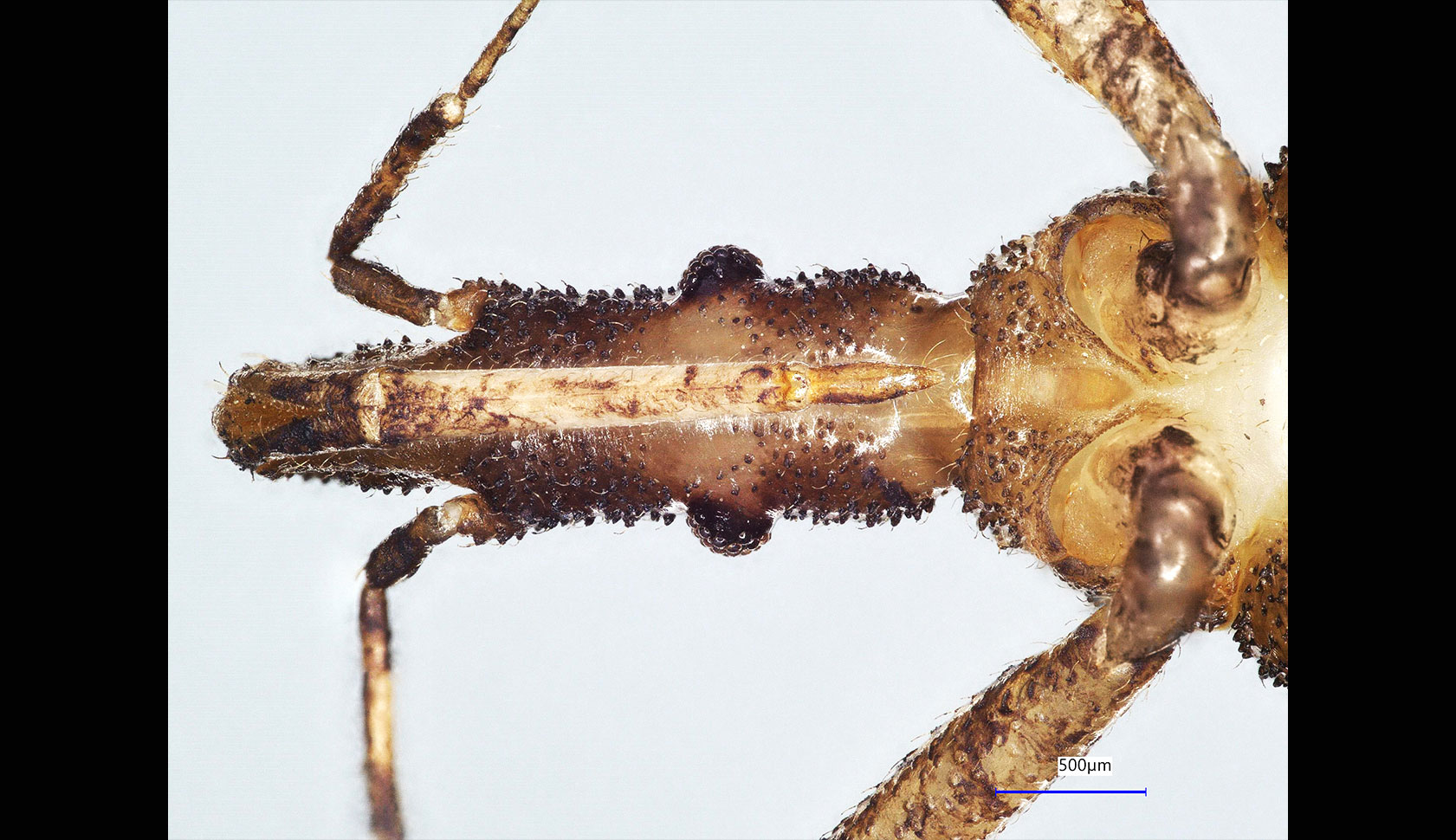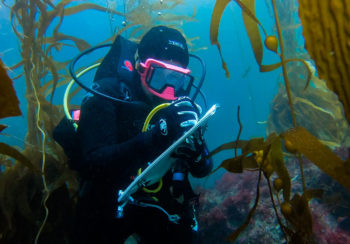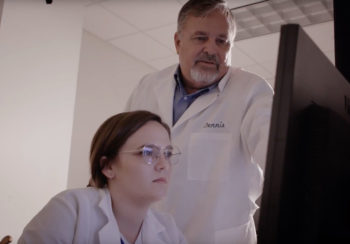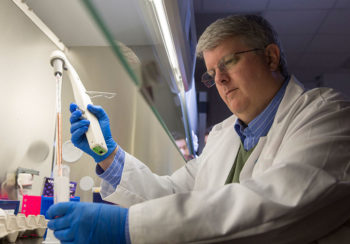At least 7 million people—mostly in Central and South America, but also in the southern United States— are believed to be living with Chagas disease. The parasite Trypansoma cruzi that causes the life-threatening illness is transmitted to humans and animals when an insect commonly called a kissing bug poops on its victim after biting them.
Ruby Harrison, a postdoctoral fellow in Drew Etheridge’s lab in the Center for Tropical and Emerging Global Diseases, wants to better understand the interactions between the parasite and its insect host.
Using the Department of Entomology’s Keyence VHX-7000 Digital Microscope, she imaged the underside of the kissing bug species Panstrongylus megistus. This image clearly shows the three-segmented rostrum, or beak, that kissing bugs use to suck blood from their unfortunate sleeping victims.
The specimen was provided by their collaborator, entomology professor Kevin Vogel, whose lab rears four different kissing bug species.






